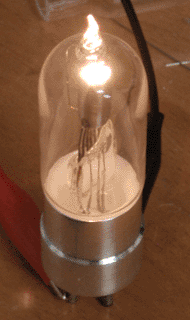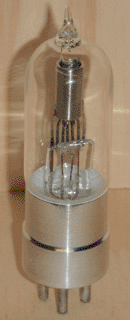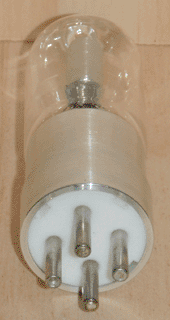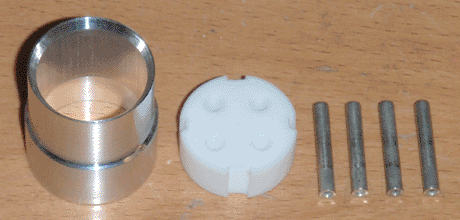


Previous tube bases had the problem that when soldering the internal leads to the external pins, the surrounding plastic would melt due to the thermal conductivity of the copper. Using Teflon instead of Delrin solves this problem, but Teflon is too soft and expensive to use for the entire base. I resolved this issue by machining a retaining band out of cheap aluminum pipe, so that only a small 3/8 inch thick wafer of teflon needs to be used to hold the pins. The base components can be seen below.

The base components are sized so that they press-fit together, requiring no adhesive. The completed base is then glued to the glass tube using a neutral-cure silicone caulk. Silicone can withstand temperatures over 200°C, and adheres excellently to both glass and aluminum. It also retains its flexibility over time, reducing the possibility that the tube will become loose in its socket. In order for the silicone to cure, ventilation paths were milled into the edge of the Teflon wafer, to allow air in. This also helps during the soldering process; without a path for air to escape, I found that the last pin becomes impossible to solder due to the expanding air blowing out the molten metal. To aid in soldering, the pins are also plated with tin rather than nickel, using MG Chemicals' Liquid Tin. This also visually blends the pin and the lead-free solder, since both are essentially pure tin. Finally, for this tube I soldered the pins using a propane torch rather than a soldering gun. This is quicker and results in less heat transferring into the plastic.
At this point I have completed my first fully interchangeable tube. The previous tube socket left much to be desired however, so I will improve upon that next.